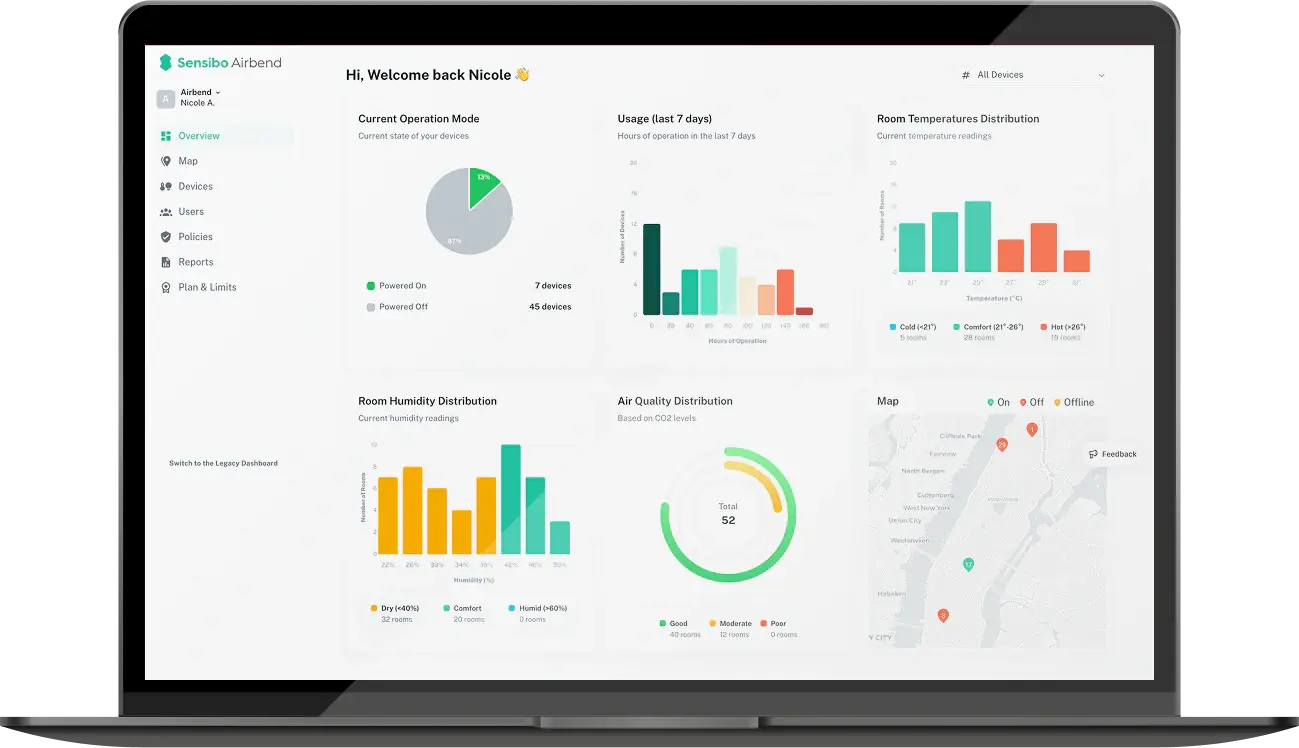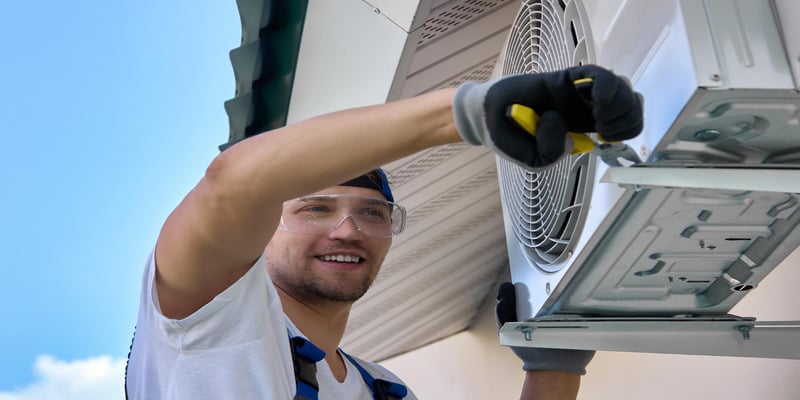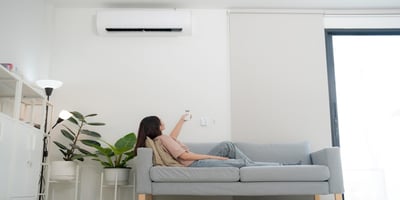Heat Wave Ready: Preparing Your Home for Extreme Summer Temperatures
Last July, Phoenix endured 31 consecutive days above 110°F - some reaching 118°F. Houston's power grid nearly collapsed under cooling demand. Record-breaking temperatures left millions sweating in homes that couldn't keep their house cool anymore.
Extreme summer temperatures have become the new normal across America. What worked for previous generations won't suffice when mercury rises above 105°F for weeks. You need smart strategies that go beyond cranking up the AC and hoping for the best.
This guide shows you exactly how to keep your house cool in the summer using proven methods that work during brutal heat waves. From summer AC prep that prevents breakdowns to emergency cooling home tactics, you'll discover everything needed to stay cool in summer while keeping energy bills reasonable.
Summer AC Prep That Prevents Breakdowns
Your air conditioner works like a marathon runner during heat waves. Proper preparation prevents costly failures when you need cooling most.
Critical Maintenance Tasks
Replace air filters every 30-60 days during peak season. Dirty filters restrict airflow, forcing your system to work harder and increasing energy costs while reducing comfort.
Clear debris around your outdoor condenser unit, maintaining at least two feet of clearance. Spray coils gently from inside out with a garden hose. Check refrigerant line insulation - missing foam jackets waste cooling energy.
Schedule professional tune-ups in early spring when contractors offer better rates. Refrigerant levels, electrical connections, and ductwork need expert attention. Red flags demanding immediate professional help: strange noises, ice buildup, warm air from vents, or dramatically higher electric bills.
Smart Temperature Control
Set thermostats to 78°F when you're home. Add ceiling fans for comfort - air movement makes warmer temperatures feel cooler. Raise the temperature to 85°F when leaving for work. Program cooling to begin 30 minutes before you return. This approach substantially reduces cooling costs without compromising comfort.
Smart thermostats learn your schedule automatically, tracking when you wake up, leave for work, and return home. Advanced models integrate with weather forecasts, pre-cooling your home before heat waves arrive.
Beat the Summer Heat: Block It Before It Gets Inside
Think of your house as a fortress under siege. Summer sun attacks from every angle. Your mission? Build defenses that stop heat before it crosses your threshold.
Window Defense Strategies
Windows betray you during summer, inviting solar heat inside like unwelcome houseguests. South and west-facing windows take the worst beating from afternoon sun.
Install cellular shades or honeycomb blinds that trap air in insulating pockets. Close them during peak sun hours (10 AM to 4 PM) for maximum effectiveness. Window film works like sunglasses for your house, reflecting infrared radiation while maintaining visibility. Professional installation typically costs $5 to $12 per square foot, while DIY materials alone cost $2 to $5 per square foot. Professional installation ensures proper application without bubbles or alignment issues.
Exterior awnings and retractable shades provide superior protection by blocking heat before it reaches your windows.
Stop Air Leaks
Your home leaks conditioned air through countless small gaps. These seemingly minor openings collectively equal leaving a window open 24/7. Find them with a lit incense stick on windy days - smoke reveals where air escapes.
Seal around window frames, electrical outlets, and material transitions with caulk. Add weatherstripping to doors and operable windows. Proper sealing typically reduces cooling costs significantly. Attic air leaks deserve priority attention since hot air naturally pushes down into living spaces through ceiling penetrations around lights, vents, and electrical boxes.
Insulation That Works Year-Round
Attic insulation works year-round - blocking summer heat and retaining winter warmth. Most homes need R-38 to R-60, depending on the climate zone. Check yours in the attic - visible floor joists indicate insufficient coverage. Professional installation typically costs $1-3 per square foot and generally pays back through utility savings within 3-5 years.
 Room-by-Room Cooling Home Strategies
Room-by-Room Cooling Home Strategies
Different rooms face unique cooling challenges. Tips for keeping the house cool begin with understanding the specific needs of each space.
Bedrooms: Sleep Sanctuary Priority
Sleep quality tanks when bedroom temps exceed 75°F. Blackout curtains block heat-generating sunlight while creating darkness that promotes deeper sleep. Ceiling fans create wind-chill effects - set them counterclockwise to push air down. You can raise your thermostat 4°F and maintain the same comfort level.
Cooling mattress toppers, bamboo sheets, and gel pillows help alleviate heat sensitivity in sleepers. Consider a small window air conditioner unit for bedrooms that tend to stay uncomfortably warm.
Kitchens: Tame Heat Sources
Kitchens pump out tremendous heat from cooking and appliances. Use exhaust fans during and after cooking. Cover pots to contain heat. Choose cooking methods that generate less ambient heat, such as microwaving, slow cooking, and pressure cooking, versus oven roasting.
Move cooking outdoors when possible. Grilling keeps heat outside where it belongs. Run heat-generating appliances, such as dishwashers and dryers, during cooler evening hours.
Living Areas: Strategic Comfort Zones
Focus cooling efforts where your family actually spends time. Close off unused rooms and redirect airflow to occupied spaces. Position fans to create personal cooling zones that let you raise the overall house temperature while staying comfortable.
Emergency Cooling Home Tactics for Extreme Heat
When temperatures hit triple digits and stay there, normal cooling strategies might fall short. Keeping the house cool in extreme heat requires backup plans and emergency protocols.
Power Outage Survival
Heat waves trigger rolling blackouts as electrical grids max out. Create a designated cool room - typically your coolest basement room or north-facing space with minimal windows. Stock it with battery-powered fans, ice-filled coolers, and emergency water supplies.
Portable power stations can run small fans for 8 to 12 hours. Pre-freeze water bottles and blue ice packs for cooling relief and emergency drinking water.
Body Cooling Techniques
When air conditioning fails, focus on cooling your body directly. Apply ice packs or cold, wet towels to pulse points - wrists, neck, ankles, temples. Take cool showers or baths. Wet clothing provides evaporative cooling as water evaporates from the skin.
Heat Emergency Recognition
Heat exhaustion symptoms include heavy sweating, weakness, nausea, headache, and dizziness. Move to cool spaces immediately, remove excess clothing, and sip cool water.
Heat stroke is life-threatening, with symptoms including high body temperature (above 103°F), hot/dry skin, confusion, and loss of consciousness. Call 911 immediately while cooling the person aggressively.
Smart Technology for Summer Air Cooling Tips
Modern cooling technology goes beyond programmable thermostats. Smart home integration creates systems that think ahead and optimize automatically.
Smart thermostats learn your schedule and adjust automatically to suit your needs. They track your phone location and begin cooling when you're 15 minutes away. Advanced models integrate with weather forecasts, pre-cooling before heat waves arrive.
Smart vents control airflow room by room, closing vents in unused spaces while directing more cooling to occupied areas. Some systems automatically adjust based on occupancy sensors.
Energy monitoring shows real-time usage costs. Time-of-use electricity rates make cooling costs vary dramatically throughout the day. Smart systems pre-cool during cheap periods and coast through expensive peak hours.
 Long-Term Investments for Heat Resilience
Long-Term Investments for Heat Resilience
Building true heat resilience requires strategic investments that provide lasting value.
Major System Upgrades
Heat pumps provide efficient cooling and heating throughout the year. Modern units work effectively even in extreme heat, offering superior efficiency compared to traditional air conditioning systems.
Ductless mini-split systems excel where central air isn't practical, providing room-by-room control while allowing unused spaces to remain at energy-saving temperatures.
Energy-Efficient Improvements
Window upgrades provide significant benefits. Energy-efficient windows with low-E coatings reduce heat gain substantially compared to single-pane windows. Enhanced wall and attic insulation provides year-round benefits.
HVAC system replacements typically pay for themselves through energy savings, especially when replacing units over 15 years old. High-efficiency systems may qualify for federal tax credits.
Natural Cooling Solutions
Strategically placed trees can substantially reduce home temperatures. Plant deciduous varieties on the south and west sides for summer shade and winter sun penetration. Shade structures provide immediate relief while trees mature.
Cool roofing materials reflect heat instead of absorbing it. Light-colored metal roofs can reduce attic temperatures significantly compared to dark asphalt shingles.
Budget-Friendly Summer Air Cooling Tips
Effective cooling doesn't require major investments. Smart strategies and minor improvements provide significant relief during heat waves.
Zero-Cost Cooling Hacks
Rearrange your schedule to avoid heat-generating activities during peak hours. Cook in the morning or evening. Close blinds during sunny periods, open windows during cooler evening hours. Create cross-ventilation by opening windows on opposite sides of your home.
Use existing fans strategically - box fans in windows can exhaust hot air or draw in cool air. Dress for indoor comfort with lightweight, loose-fitting, light-colored clothing.
Quick Wins Under $100
Reflective window film provides immediate solar heat reduction for $3-$8 per square foot. Most homeowners can install it themselves. Basic weatherstripping and caulk cost under $50 for most homes, but significantly improve cooling efficiency.
Portable fans, which range in price from $20 to $100, provide targeted cooling. Cooling towels, neck wraps, and personal fans offer individual comfort for under $30 each. LED bulb replacements reduce heat generation while cutting electricity costs.
Effective Solutions Under $300
Window air conditioners for single rooms cost $150-$300 and can cool bedrooms or home offices without incurring the expense of central air. Battery-powered fans provide cooling during power outages and can run for 8-12 hours on a single charge.
Attic fans reduce heat buildup in roof spaces for $100-$200 installed, and are especially effective in homes with ductwork in the attic spaces.
Prices vary by region and retailer; always compare options and consider energy efficiency ratings when making a purchase.

Your Action Plan: Stay Cool in Summer Starting Now
Effective heat preparation follows a logical sequence. Start with immediate safety measures, then build toward long-term improvements.
This Week: Emergency Preparedness
Thoroughly test your AC system before the peak season. Address any temperature control issues, airflow problems, or unusual noises proactively. Stock emergency cooling supplies: battery-powered fans, ice packs, extra water, and cooling towels. Research local cooling centers that operate during heat emergencies.
This Month: Quick Improvements
Install basic weatherstripping and caulk obvious air leaks around doors, windows, and electrical outlets. Add window treatments to control solar heat gain - cellular shades or reflective film provide immediate benefits for modest costs.
Optimize fan placement throughout your home. Create airflow patterns that move cool air into occupied spaces and exhaust hot air outside. Research local utility rebates for energy improvements.
This Season: Strategic Upgrades
Schedule professional HVAC maintenance if you haven't already done so. Consider installing a smart thermostat for improved temperature control and energy monitoring. Plan major improvements, such as insulation upgrades, window replacements, or HVAC system modifications.
Evaluate your home's cooling weak spots - which rooms stay hottest? Target these areas for improvement with room-specific solutions.
Long-Term Planning
Budget for significant upgrades that provide lasting value. Energy-efficient windows, enhanced insulation, and high-efficiency HVAC systems pay dividends for decades. Research financing options, including utility programs that offer low-interest loans for energy upgrades.
Keeping a house cool in extreme heat takes preparation, smart strategies, and sometimes a significant investment. The alternative - sweltering in inadequately cooled homes while paying excessive energy bills - makes the effort worthwhile.
Begin with essential maintenance and emergency preparedness. Build systematically based on your budget and comfort priorities. Effective cooling strategies are most effective when combined with efficient mechanical systems, smart controls, passive heat reduction, and emergency planning.
Your investment in cooling preparedness delivers benefits every summer for years ahead. Your family stays comfortable and safe while energy costs remain reasonable, even during dangerous heat waves.




































.jpg?height=200&name=photo_2024-05-17_10-28-43%20(1).jpg)
.jpg?height=200&name=2149216630%20(1).jpg)
